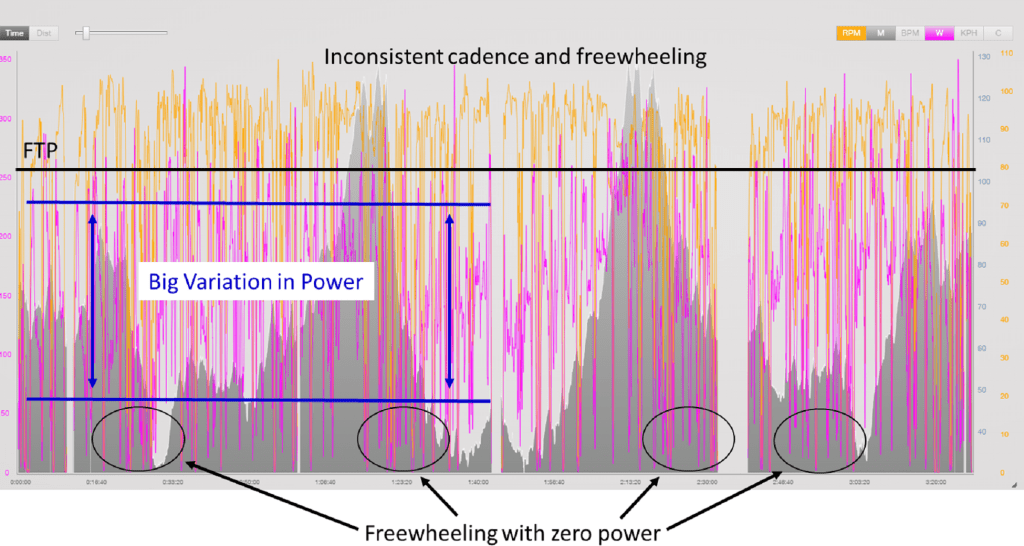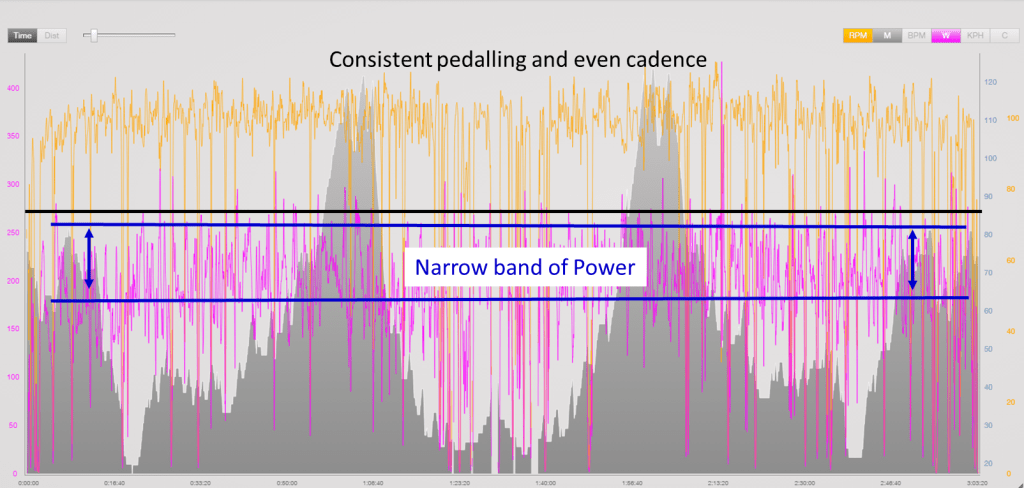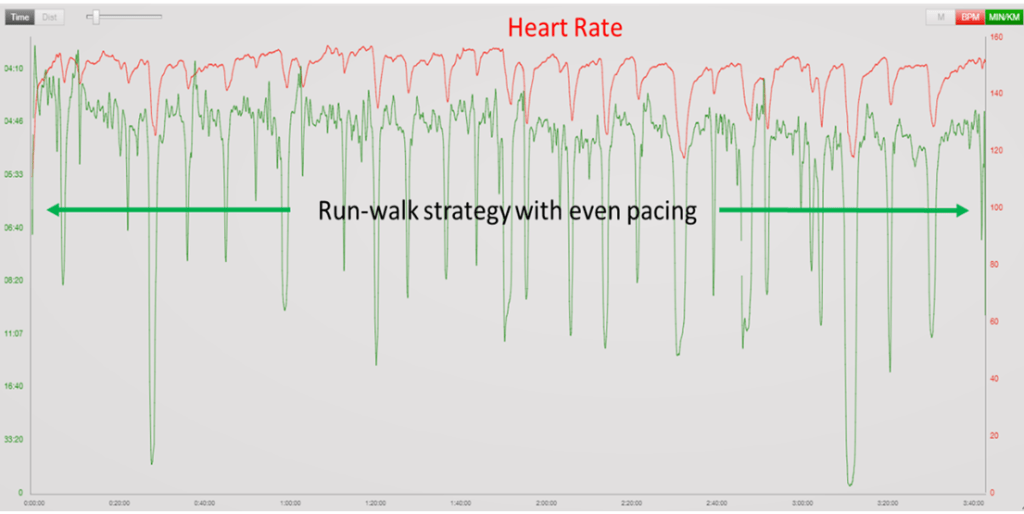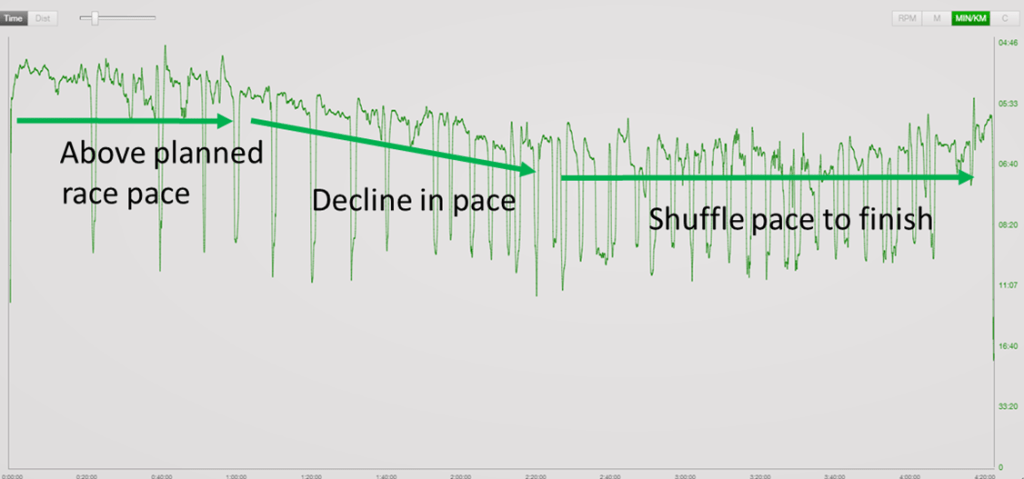Ever been in a race when all was going well and then it just all fell in a heap? Couldn’t keep the pace going or the power on the bike? Even though you could a few minutes ago? You were on track for a pb or a quick time but it didn’t end up that way, you lost so much time in the last few kms or later stage of the race that it became a challenge just to finish?
Well it’s not uncommon and you will find that those athletes who are able to not lose time or minimize the loss at the end of a race produce the better overall performances. Addressing this drop off in pace or power and putting a plan in place prior to racing is essential in producing a strong performance.
Maybe you absolutely nailed the bike leg but lost it all within the first few kms of the run. Why? Whether it be in a short or long course race such as Ironman and Endurance events it is applicable to everyone. And in all 3 disciplines of triathlon.
There are primarily 3 components to taking the moments away where you lose time:
1. Efficiency and improvements in biomechanics
2. Appropriate pacing and power
3. Application of pacing and power
Onebody’s professional and accredited Triathlon Coaches have vast experience in assisting athletes of all abilities to improve and develop in training and racing to achieve and race at their best. Contact Onebody to discuss your training and racing plans and for further information view the Online Triathlon coaching athlete information page
1. Efficiency and improvements in biomechanics
Swimming efficiently is about reducing the drag you create against the water. To achieve this you need to reduce and minimize the frontal surface area you have in the water.
For example, head position is a major influence on this, lifting your head when breathing equates to your hips and legs dropping thus increasing the drag against the water. As athletes fatigue their technique gets sloppy (lifting their head as an example) thus drag increases and you slow down.
A Stroke Correction Clinic or a private swim session working on becoming a more efficient swimmer, focusing on different components of your swim technique one at a time and identifying specific areas to develop is a great start. For information on the next Onebody Stroke Correction Clinic view the Swim Squad and Stroke Correction page
There are a variety of components influencing Cycling efficiency which can be addressed through improving your cycling behaviour. Think of your cadence, gear selection, when and where you are changing gears and your approach to climbing a hill. Do you pedal constantly?
Being even with power (a narrow range rather than an absolute number) and pedalling constantly are 2 techniques you can develop to assist with being more efficient on the bike and running well off the bike.
Poor Cycling behaviour, inconsistent cadence and power with big spikes in power

Good cycling behaviour through a combination of cadence, power and consistent pedalling

For further information on how to improve cycling efficiency click here
Like swimming, Run technique and your body position have a major role in being an efficient runner.
Maintaining an efficient technique throughout an entire race, utilizing the correct muscles such as your glutes and hamstrings, and the appropriate placement of your feet to optimize pushing the power in the direction you want to travel are dynamics to be considered. The longer you are able to continue with an efficient technique, the more even the pace as well as lessening the risk of injury.
Single Leg Glute Hamstring Pull Back Run Drill – Running
Clamshell Feet in air – glute activation
2. Identifying appropriate pace and power
Through your training and testing you will have an understanding of what power on the bike and what running pace is appropriate for your race. These will of course vary depending on the race distance, and identifying a realistic range for pacing is important.
Aiming to ride 10 watts above or run 10sec per km quicker than you have been capable of is not a particularly smart race plan. Or following another rider who passes you in a race who pushes you 10 watts higher than your plan.
Identify a range rather than an absolute number, there are variables such as temperature, wind, elevation and lifestyle factors which will impact your ability to hit an absolute number at any point in time.
3. Application of appropriate pacing and power and race plan
Then the power or pace just goes, and it becomes a grind or a shuffle run to the finish. Holding an even power range or run pace throughout is a much better approach than going out hard and trying to hold on. Starting at an appropriate level and holding the pace or possibly aiming to get quicker at the finish is what your goal should be.
Examples of application of Power in long course triathlon bike leg – Power too high for 1st half of bike, thus 2nd half greatly influenced and under the planned watts for 2nd half. Additionally many spikes in power over FTP in the 1st half of the ride

Even pacing throughout entire bike ride. Excellent application of race power plan, even with power and minimizing power spikes (over FTP – black dashed line)

Run pacing…
Excellent run pacing with a run – walk strategy helping to promote even run pacing throughout the entire run.

Similar run-walk race strategy but athlete started too quick and faded prior to reaching half of the race distance. The length of the run interval decreased considerably and the athlete shuffled to the finish

For further information on Onebody’s Online triathlon coaching and the Onebody Triathlon Training Squad please email info@onebody.com.au or contact our training studio on +61 2 8677 5605


